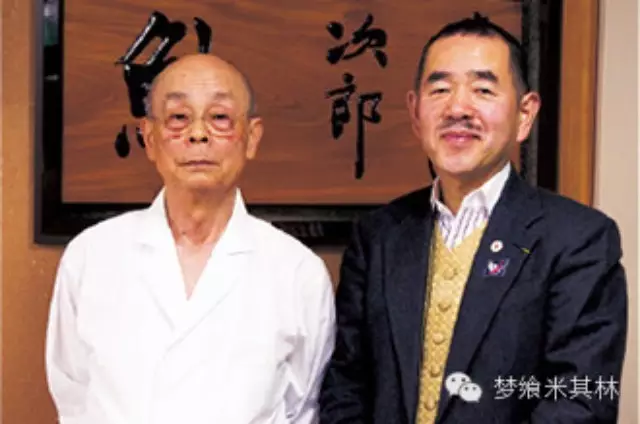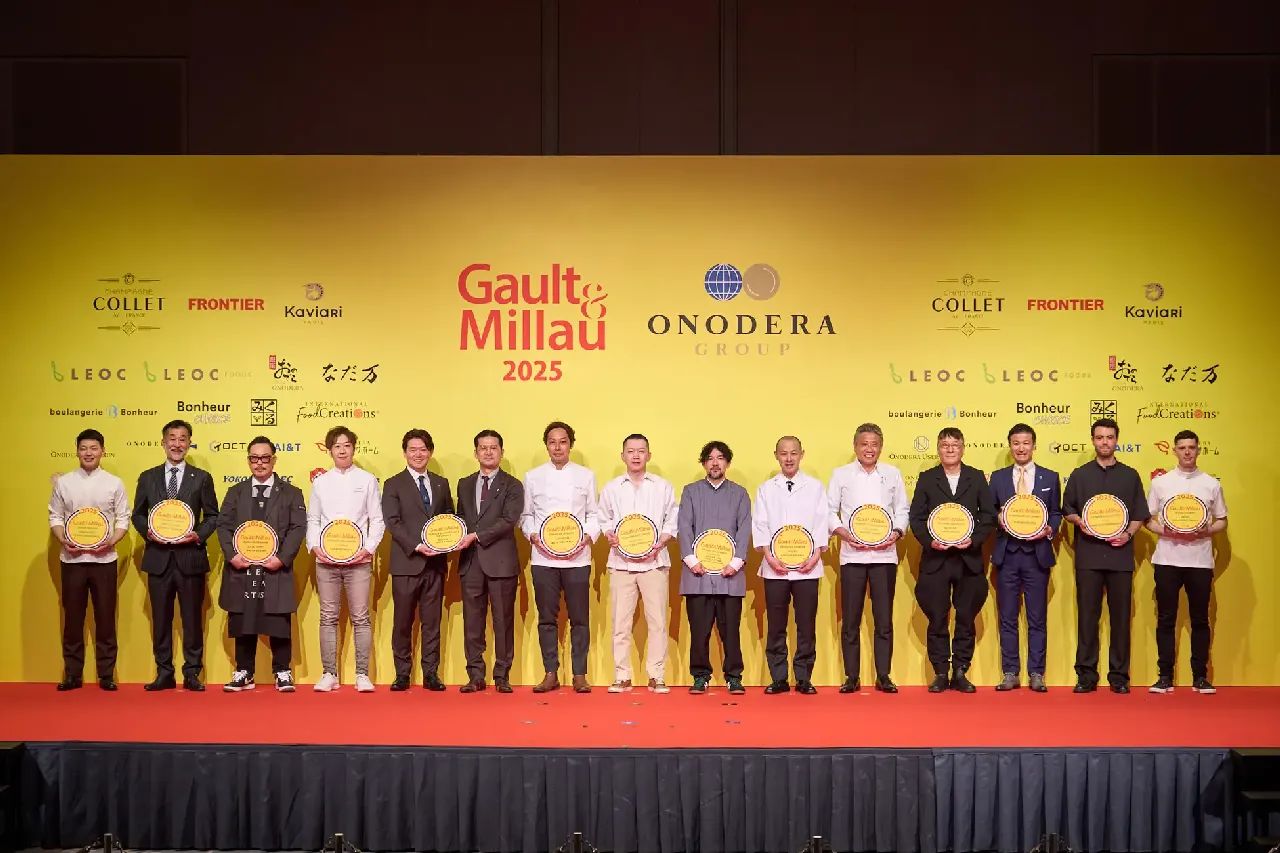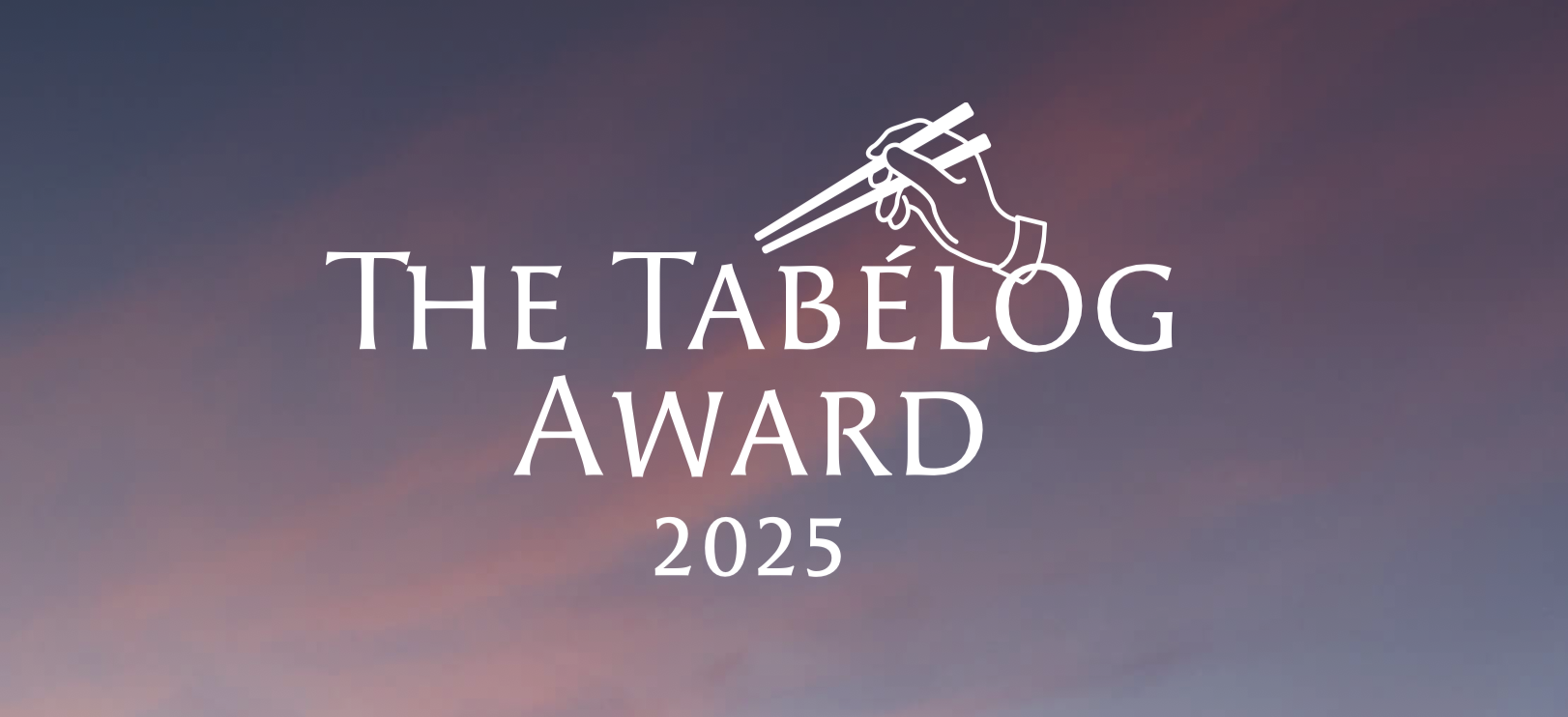撰文: 陈庆华 Jocelyn Chen

有幸到吃到小野二郎所捏出来的寿司,这是身边许多人的梦想。几前年第一次看到了李怡志先生所写的一篇关于寿司之神之小野二郎与山本益博之间的共生关系,之后看了寿司之神纪录片,就像是大多数的美食爱好者一样,默默的将数寄屋桥次郎放在bucket list 里,夹杂著兴奋与紧张的心情期待着去朝圣。
阅读以及不断多方拜访名厨体验不同菜式,的确在味蕾以及对食物的认知上产生极大的改变。相对的了解的越多,评论一事便会更趋保守。
只有少数的大师级的厨师可以被全世界的厨师所仰慕,小野二郎先生是其中一位,而二郎最敬重的食评家是山本益博。寿司之神的导演David Gelb也称呼山本为寿司诗人,山本建议Gelb将本片的拍摄以交响乐章来呈现,此举也影响了Gelb后续在Netflix所拍的主厨餐桌chef’s table系列的手法,也沿用了大量的交响乐,以及美食家食评家的访谈,让纪录片本身更有故事张力。David Gelb也在受访时提到他欠山本非常大的人情。至于chef’s table系列纪录片,之后有机会一一详述。
影片为非营利组织MAD 创始人同时也有「北欧厨神」之称的Noma 餐厅主厨René Redzepi 几个月前与团队及山本益博先生一同拍摄,记录了寿司大师小野二郎。小野二郎讲述了自己对于工作的热情以及当初的梦想,并透露自己目前还在为即将到来的2020年东京奥运会做准备。影片中不难看出René Redzepi也是十分的紧张呢。
「北欧厨神」 Noma 餐厅主厨 René Redzepi 最近与团队一同前往日本拍摄记录了传奇寿司大师小野二郎。许多人通过 2011 年的一部广受好评的纪录片《寿司之神》认识到这位大师,就连奥巴马总统到东京时也曾拜访过他的寿司店「数寄屋桥次郎」
以下节录自李怡志先生richyli.com 于2011所写的文章”寿司之神之小野二郎与山本益博”:
《寿司之神》的主角是日本寿司界的大老小野二郎。他在这一行超过70年,看过大风大浪,而且最重要是看过整个产业不断的循环与变化,在几十年的过程中,日本的经济、日本人的饮食习惯、日本的食材都有很大的变化,经过了不同浪潮洗刷下他老人家还能继续屹立不摇,获得米其林三星的肯定,精神非常值得学习。

这部片子基本上的主轴就是「职人魂」,找一项自己有兴趣、有天赋,而且能够有稳定收入(我觉得这点绝对不能忽略)的工作,然后用全部的热情,将它完成到最完美、最极致,大概就是这样的精神。这部片从励志片的角度来看,非常适合在工作上遇到挫折、恍惚,或者不确定要不要「君子立长志」的人去看。小野二郎的职人魂是不容怀疑的,自己固守一家小店すきやばし次郎,从食材、制作、招待等等都有自己的明确的规范,而且徒弟出去开店,也是米其林三星,这就真的非常厉害了。毕竟很多米其林三星的老板自己开的分店或者副品牌都很难再得米其林三星,但水谷八郎离开亲方自己开店之后,也能够得到米其林三星,表示这样的职人魂强大到能够贯穿到徒弟身上。(注:2015水谷为两星)
这部片也是美食片。我看到小野二郎捏出来的寿司几乎都像「活物」,十分惊讶。这点看了电影自然就有深刻体会。从事餐饮,甚至任何与沟通、五感相关产业的人,从中必然大有收获。
以上两点,大概看电影前就会知道大概有这样的内容了,当然,强度或许都比想象中更强,更深入,所以值得一看。片中有一个重要的配角,山本益博,我觉得他在电影中,或许也在真实生活中,对小野二郎或すきやばし次郎都扮演了相当重要的角色。

人家说富不过三代,又说富过三代知吃穿,很遗憾因为战乱的关系我就是那第四代!虽然我不太会吃穿,但我看过「富三代」的品味如何。我们家的富二代、富三代都在上海读大学,富三代还能下厨房,对于吃的功力非常了得。我虽然没有得到任何真传(请叫我麦当劳世代),但好歹看过这样的人如何吃、怎样看待食材、用什么样的态度来面对饮食。
在网络兴起之后,突然间冒出很多「饮食写作者」。一时之间「美食家」、「美食评论家」、「网络美食家」很多,但我始终觉得「能吃」这件事不是你真的「吃到」就算的。「吃饱」简单、「吃贵」容易、「吃好」不难,但「吃巧」呢?当一个美食记者或者网络美食家,很容易,只要你在大媒体工作,或者部落格每天贴食记,不论是人家招待或者媒体出钱,天天都可以吃饱,偶尔也能吃贵、吃好,可是要从中体会出那个「巧」,真的需要一点文化底蕴。没有文化底蕴的美食家,很多即便再有名,大多只停留在「高级吃饱」或者「昂贵吃饱」的阶段,这种美食家的特征就是外型一看就吃得很饱,有的饱到身体不好,还有一个最糟糕的是我曾经在电视访问中看到某位记者转任的「美食评论家」说出「饱到肛门爆开」这种话。
任何一个与五感相关的产业都需要好的评论者才容易进步,我看了寿司之神之后才深深体悟,啊,原来人家有山本益博这么强的评论者(与消费者),产业才可能进步到这个水平啊,这种良好的共生关系,真的很令人向往。
在电影《寿司之神》当中,我从山本益博得到的收获不比小野二郎少,他不是吃饱、吃贵、吃好那种等级的,他真的很知道美食之巧在哪里,而且是从各种不同的感官与角度一起品味。到了山本益博这种了解寿司的境界,不也是另外一种《寿司之神》?!

转载或其他合作事宜
请联系微信号:tastytrip2020
出处为www.richyli.com
NPR News 记者Renee Montagne采访寿司之神的导演David Gelb的访谈,透过山本益博,小野二郎才同意拍摄纪录片。
MONTAGNE: How did you get Jiro to let you follow him?
小野二郎如何让你同意跟拍他。
GELB: Well, I owe a great deal to the food writer, Masuhiro Yamamoto. I like to refer to him as a as a sushi poet. He was the judge of “Iron Chef” in Japan. He convinced Jiro that I would do a fair telling of his story.
我欠山本益博先生一个很大的人情,我喜欢称呼他为寿司诗人,当时他是日本料理铁人节目的评审,他说服了小野二郎我会拍摄一个纪录片来真实的呈现关于他的故事。
MONTAGNE: One thing about this film that brings you in is when one first meets Jiro, you know he’s amazing at what he does, you know he’s the best sushi chef in the world, and yet he seems quite fierce. And bit by bit, you see this other side – he’ll break out into a little smile. And that, maybe in a way, that seems more of a gift.
这部纪录片让您遇见二郎,你知道他是世上数一数二的寿司师傅,但他似乎非常犀利及严肃。通过点点滴滴,你看到他的另一面 – 他的微笑。而这,或许在某种程度上,是非常不容易的。
GELB: Absolutely. When I first ate at the restaurant, I was very, very nervous ’cause I heard, you know, what is serious man he is and kind of how stoic he is, and he doesn’t talk to the customers, and the meal last 30 minutes . And, you know, you’re out of there as soon as you finish, basically.
当然。当我第一次在次郎用餐,我感到非常,非常紧张,因为我听说了,他是多么的严肃,他不跟客户说话,而一顿30分钟,而且,只要你用餐完毕将离开餐厅,基本上是这样。
But as soon as he finished service and the customers leave the restaurant and he becomes, you know, a very personable, kind gentleman. And what I realized is that it’s not that he’s mean, he’s just concentrating, using his full attention on the task at hand, which is making sushi. He’s just focus on making every single piece of sushi the best sushi of his life.
但是当他完成服务和客户离开餐馆,他是一位风度翩翩,亲切的绅士。而我意识到的是,他并不是态度严肃,他只是集中精力,用他的全部注意力集中在手头的任务,制作寿司。他只是专注于让每一贯寿司成为他一生中最好的寿司。
MONTAGNE: You know, does it matter that it’s such a small place? His entire restaurant consists of a bar with 10 stools?
GELB: Yeah, there’re 10 seats in the bar. They do maybe one turnover for lunch and one turnover for dinner – that’s all the people that he can serve to his standard, ’cause that’s all the fish that exists in the fish market that will satisfy him.
MONTAGNE: There are plenty of examples, in this film, of the lengths that Jiro goes to, to make the ultimate sushi. One of them, which he doesn’t do himself: massaging the octopus. What’s that?
GELB: Octopi are often tragically under massaged in sushi restaurants.
MONTAGNE: So then you end up chewing on them in a way.
GELB: Yeah. Well, octopus, you know, I think a lot of people that eat octopus in a normal sushi restaurant – especially Americans, you know, octopus isn’t a popular because it’s known as being chewy and it has sort of suction cups. And, you know, a lot of people think it’s a piece of rubber. And Jiro laments that, as well. ‘Cause he thinks that octopus often has no flavor. And so, he developed a way to make octopus delicious.
It needs to be massaged for an hour every day, in order to both tenderize it and also to bring out the flavors of what the octopus has been eating. The octopus that they get has a fantastic diet of clams and shellfish. And so, by massaging the octopus they’re unlocking all the flavors that’s inside of it. And that’s one of the reasons the Jiro’s octopus is so delicious.
MONTAGNE: Your film takes us to this fish market. Let’s take a listen to the sound of it.
MONTAGNE: Describe for us what we’re hearing.
GELB: This is the tuna auction and the procedure has been unchanged for over a hundred years. There’s no digital record-keeping of any kind. It’s all, you know, completely analog. The auctioneers are ringing bells to indicate where the auctions are taking place on the floor, ’cause there may be a few auctions happening at the same time for different fish. And the auctioneers are sort of like, yelling, like in a Sotheby’s essentially, and it kind of takes on a very musical quality.
MONTAGNE: Almost like jazz, whereas the rest of the film, there is a score that is classical music. And it seems as if you structured the story as a kind of symphony.
GELB: Certainly, and this is something that Yamamoto, our food writer and narrator, he conveyed this to me when I first started talking to him about Jiro and about sushi. Is that Jiro’s sushi – his sushi courses like a concert; it’s like a piece of music. And it has movements. And it has, you know, kind of hills and valleys – all very delicious, but the hills and valleys meaning the contrasts and the flavors between the different sushi.
MONTAGNE: Throughout the film we see sushi; sushi that’s extremely elegant and an exquisite to look at. Even without being able to taste it, it does give one the impression that it’s quite sublime.
GELB: So, they’re actually quite easy to shoot because you just have to point the camera from a compelling perspective and the sushi does the work itself. First of all, just Jiro’s sushi, they look like jewels. You know, they are incredibly beautiful. When he places a piece of sushi on the plate, it settles into place. And Yamamoto, the food writer, describes it as: The soft landing.
And it’s because Jiro packs the rice firmly so it retains its shape, but also very lightly so that there’s air that moves within the rice.
MONTAGNE: How does it taste?
GELB: The rice is warm and fluffy, but each grain retains its perfect shape, and it’s just slightly out al dente at the same time. And when you put a piece of sushi in your mouth, the rice kind of poofs. Eric Ripert, the French Chef, described it where the rice just poofs and it just the flavors combine with the fish. And what’s happening is the rice is elevating the fish. And when you master that balance, like Jiro has, the only way to describe the sensation of eating it is umami – and that’s kind of the perfect balance where you just taste the true essence of the fish.
MONTAGNE: And umami, as communicated by his oldest son, as the experience of, ahh.
GELB: Of ahh, exactly. Umami is just the feeling of satisfaction while eating. You just – are just moved by what you eat. After having eaten there and understanding all the work that goes into it, eating a piece of sushi from Jiro is really quite emotional, especially when you know the vast labors that have gone into creating that single bite.
-End-











